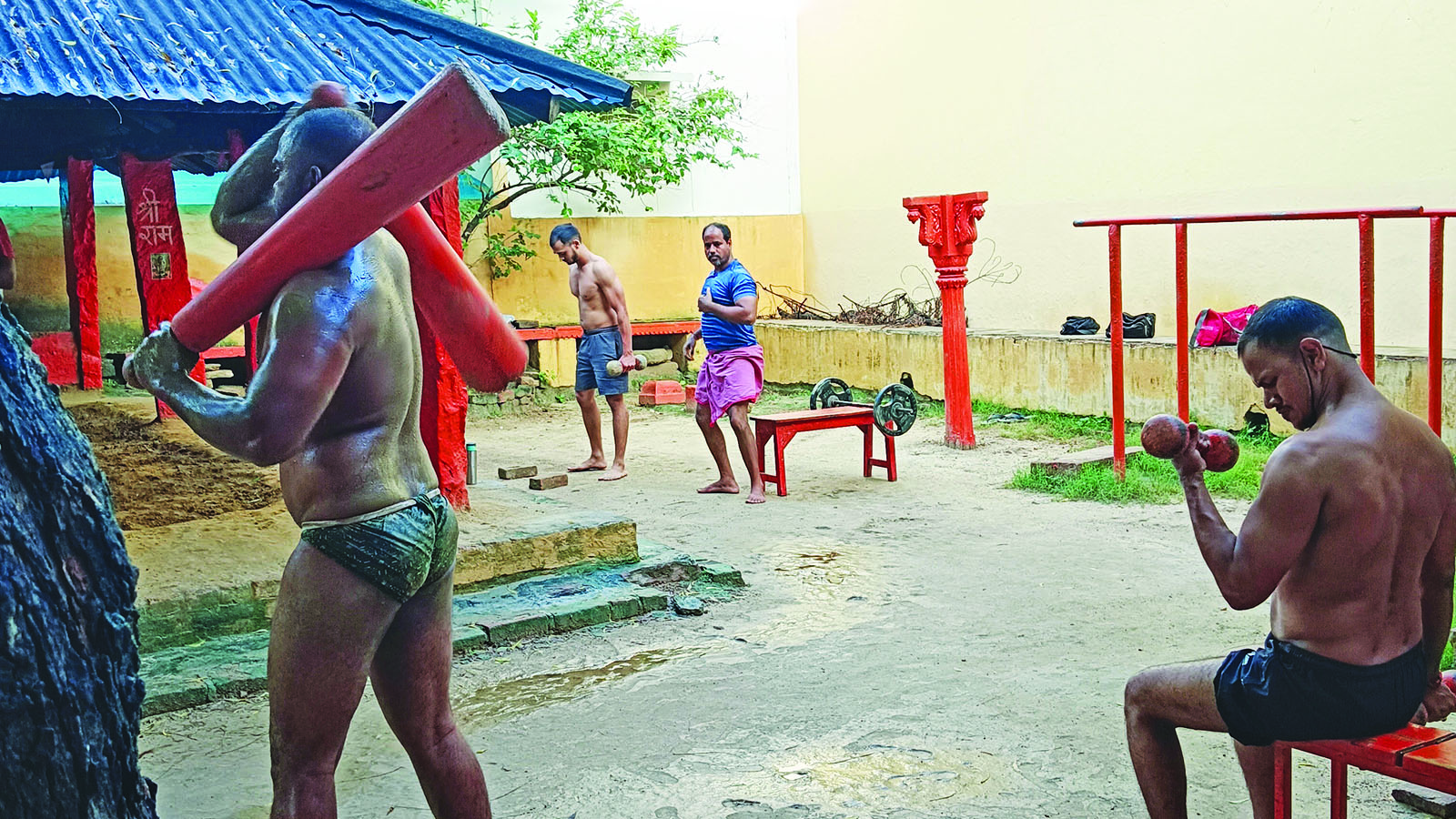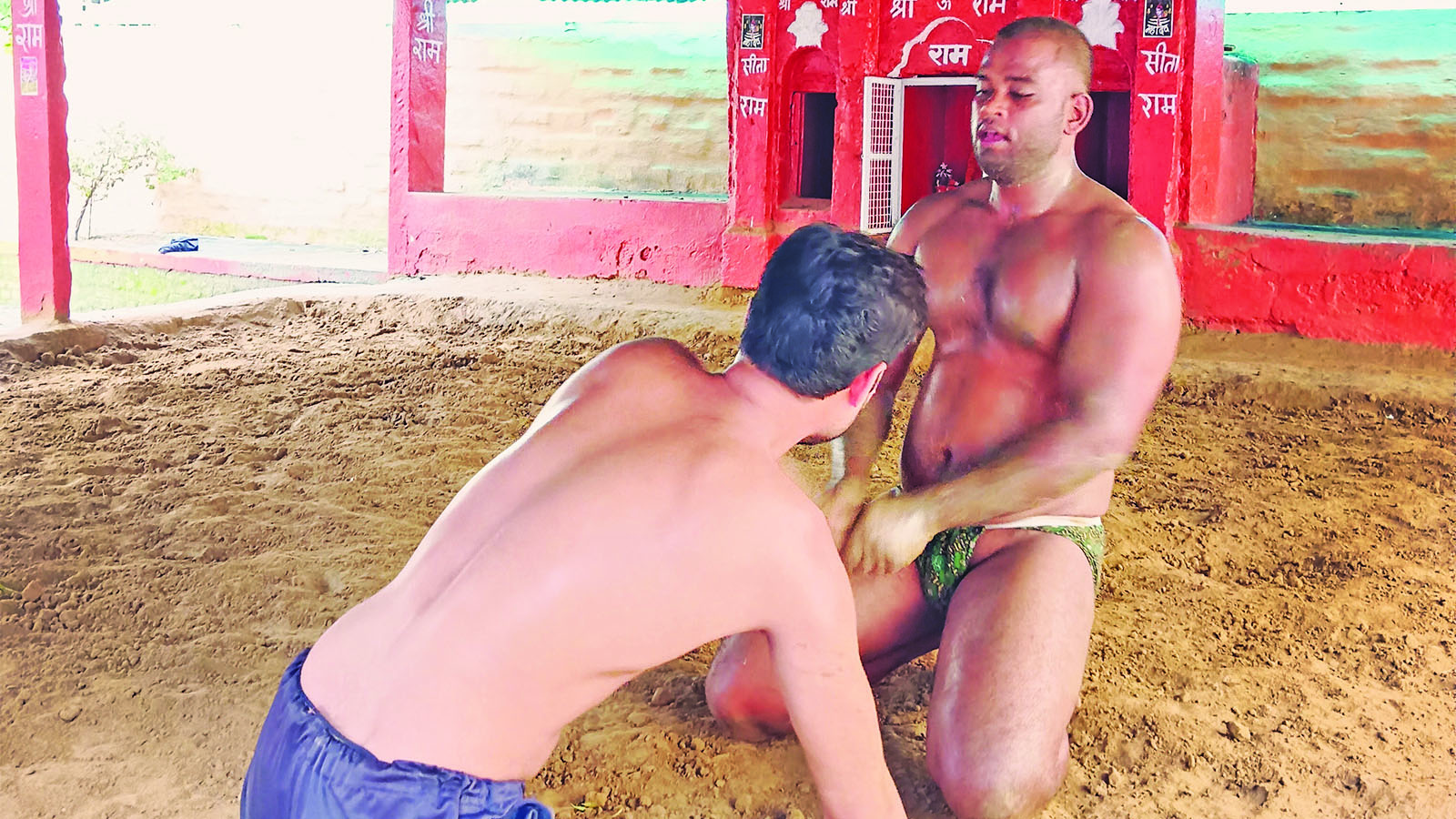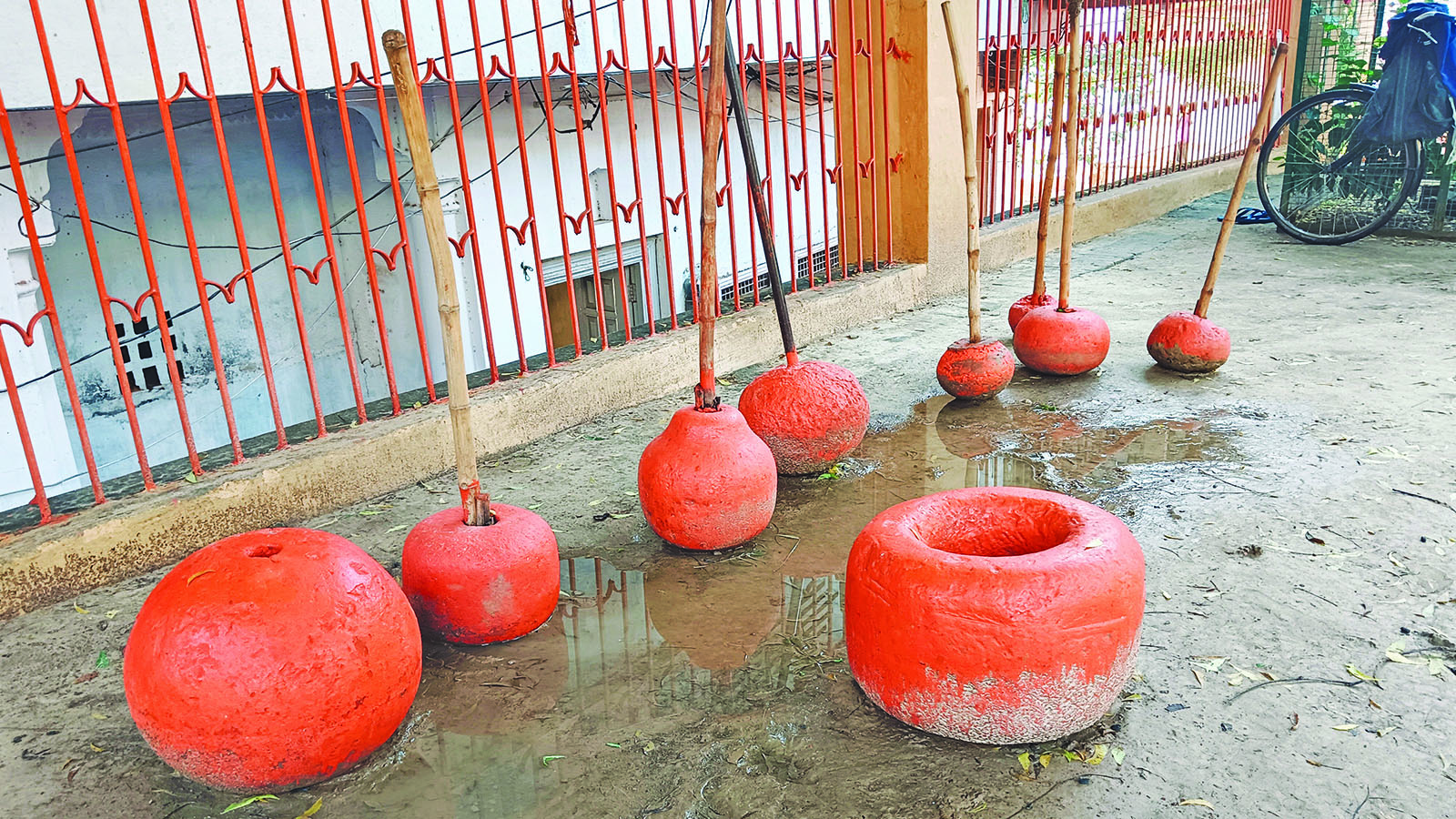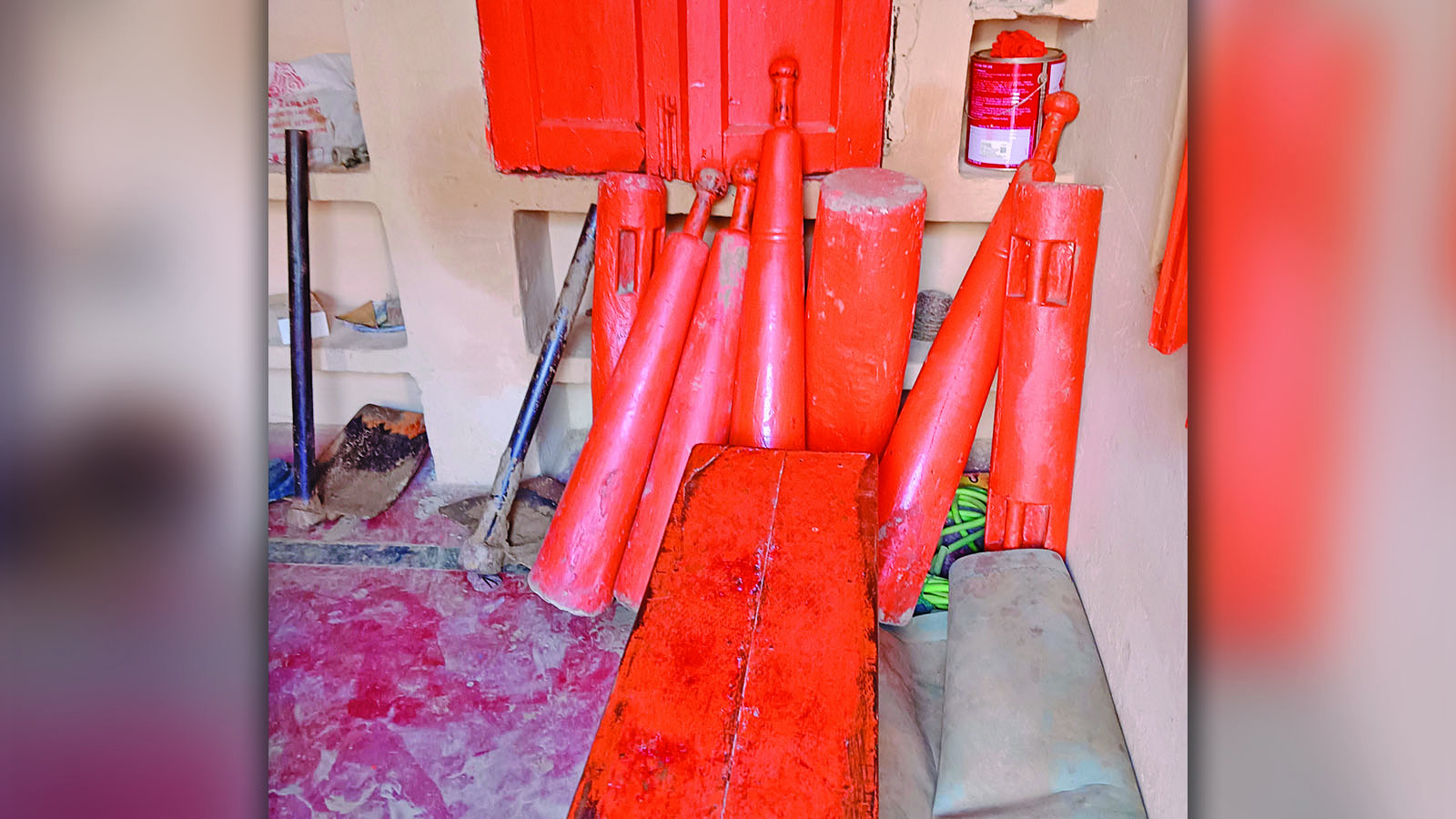
- Home
- India
- World
- Premium
- THE FEDERAL SPECIAL
- Analysis
- States
- Perspective
- Videos
- Sports
- Education
- Entertainment
- Elections
- Features
- Health
- Business
- Series
- In memoriam: Sheikh Mujibur Rahman
- Bishnoi's Men
- NEET TANGLE
- Economy Series
- Earth Day
- Kashmir’s Frozen Turbulence
- India@75
- The legend of Ramjanmabhoomi
- Liberalisation@30
- How to tame a dragon
- Celebrating biodiversity
- Farm Matters
- 50 days of solitude
- Bringing Migrants Home
- Budget 2020
- Jharkhand Votes
- The Federal Investigates
- The Federal Impact
- Vanishing Sand
- Gandhi @ 150
- Andhra Today
- Field report
- Operation Gulmarg
- Pandemic @1 Mn in India
- The Federal Year-End
- The Zero Year
- Science
- Brand studio
- Newsletter
- Elections 2024
- Events
How Varanasi akhadas ‘hook’ religion with wrestling
Nitish Singh gets his head into a ‘gar nal’ (circular stone ring) and lifts it with the support of his neck and shoulder. Holding the saffron-coloured ring around his neck, he walks around the akhada (a traditional gymnasium and wrestling ground) twice and then keeps the ring at the spot from where he lifted it.This 27-year-old has been undergoing training at Akhada Swaminath, one of...
Nitish Singh gets his head into a ‘gar nal’ (circular stone ring) and lifts it with the support of his neck and shoulder. Holding the saffron-coloured ring around his neck, he walks around the akhada (a traditional gymnasium and wrestling ground) twice and then keeps the ring at the spot from where he lifted it.
This 27-year-old has been undergoing training at Akhada Swaminath, one of the oldest akhadas on the banks of river Ganga in Varanasi, for the last 10 years. As he wants to win the upcoming competition, he needs to undergo rigorous training. But that’s not the case with 64-year-old Ganesh Yadav, who started coming to the akhada with his father when he was 12 years old. Akhadas are places where the pehelwans live and train along with their masters and learn the art of traditional Indian wrestling.
Even though more than 500 akhadas once existed in the holy city of Varanasi, the number of these wrestling rings has come down to 40 today, mainly due to the induction of modern wrestling rings and gyms with hydraulic exercise equipment. Lack of sponsorship, according to wrestlers, is another reason. However, some people still take their ‘akhada’ routine seriously, using the traditional exercise tools like ‘jodi’ and ‘naal gada’ to stay fit and energetic.
No one needs to pay any fees for joining an akhada, which is generally controlled by two or three senior masters. The training also doesn’t involve any fee but one has to be truthful to oneself as one needs great discipline and devotion to perform. One has to undergo strict dietary plans charted out by one’s master. Like many young wrestlers, Nitish is regular to the akhada.

A morning practice session at Akhada Swaminath.
He wakes up at 5 am every day and reaches Akhada Swaminath in Tulsi Ghat by 6. He follows a strict vegetarian diet, to keep himself fit. “I prefer a mixture of pulses, grams and greens. I drink milk regularly. I don’t eat meat. My mother cooks my food separately and that too with a very little oil. After all, it is our guruji who decides what we should eat. If we follow the diet properly, we will get the result,” says Nitish Singh, who works with a real-estate company in Varanasi.
Nitish has won minor tournaments, but he wants to be a champion in the main tournaments. “I love traditional Indian wrestling. Most of the traditional gymnasium tools are made of wood and stone. I want to follow the traditional methods, and that’s why I don’t go to any modern gym in the town,” he said.

Nitish Singh (right) during a practice session.
There are two types of people who normally come to the akhadas: Those who maintain it as a routine since childhood, and those who aim for competitions. Ganesh Yadav belongs to the first group. “It was my father who brought me to this ‘akhada’ when I was just 12 years old. I have never participated in any competitions. My idea is to keep myself fit. I work on all the traditional tools here. My favourite being the ‘mugdars’ though. My day will be incomplete without a visit to the akhada. It is so closely linked to my life,” said Yadav, who runs a grocery shop near Assi Ghat.
After a couple of rounds of workout, Nitish decides to finish the day’s work. He wants to go home early because of some personal engagement. However, his senior Ashok Kumar Jaiswal doesn’t agree. He asks Nitish to complete the day’s workout, particularly inside the mud pit. “Guruji has gone out but that doesn’t mean that there will be any compromise on the regular work-outs. Each one has to complete the set of workouts allotted to them by the Guruji,” said Ashok Kumar, who won many local championships in his late 20s. At 50, Ashok says he uses all the traditional tools during his regular workout.
Every ‘akhada’ has at least a temple dedicated to lord Hanuman. One should bow before the lord when one enters or leaves the ring. Other Hindu gods and goddesses are also worshipped in some akhadas. Even though membership is free, there is an initiation ceremony that formally inducts a novice wrestler into an akhada.
The ritual of initiation, according to Joseph S Alter, varies from one akhada to another. “After attending an ‘akhara’ for some time, the guru will tell a wrestler that it is time for his initiation. On the appointed day the young wrestler brings with him a new ‘langot’, a ‘sapha’ (head cloth/turban), prasad (usually in the form of laddus made of chickpea flour and sugar), paraffin or oil, cotton to make a wick for the prayer lamp, and a garland of flowers to place around the image of Hanuman. After practice the ‘sapha’ and ‘langot’ are offered to the guru along with cash,” writes Joseph Alter in his book titled, The Wrestler’s Body: Identity and Ideology in North India.
“The sum is usually 11 rupees but any multiple of ten plus one is acceptable. The guru then takes the garland and lights the lamp after placing the prasad in front of the figure of Hanuman. The initiate is asked to honour Lord Hanuman and to swear allegiance to the ‘akhada’ and the founding guru. The prasad is then taken and distributed among the other members of the ‘akhada’. The conclusion and most important part of the ceremony is when five laddus are taken and buried in the four corners and centre of the pit.”
Nag Panchami, a festival to honour snakes, is celebrated across the northern parts of India in July. In Varanasi and many parts of northwestern India, Nag Panchami is also a time when ‘akhadas’ celebrate wrestling as a way of life. The gurus will be honoured and new tournaments will be organised during this time.
Joseph Alter said the physical structure of an ‘akhada’ — minimally an earthen pit, an exercise floor, a well, and a temple or shrine — is maintained by public donation. The membership in an ‘akhada’, however, is a tricky affair. There are a lot of “irregular” members who come to the ‘akhada’ when they have time but they don’t follow a strict core of exercise and diet charts. He said the larger akhadas — Ram Singh, Bara Ganesh, Swaminath, and Gaya Seth — estimate that their regular membership is between 60 and 70. However, on any one day there are between 25 and 30 wrestlers who attend morning practice. At the smaller akhadas — Ram Kund, Ishvarigangi, Ram Sevak, Sant Ram, and Ragunath Maharaj — regular membership is between 40 and 50, with 15 to 20 wrestlers attending on any one day.

Naal gada and other traditional stone weights for wrestlers.
In 2017, some akhadas opened doors to women wrestlers, breaking the traditional gender barriers, thanks to the Aamir Khan-starrer Dangal (2016), which tells the story of a father who trains his daughters to become world-class wrestlers. “Akhada Swaminath is more than 450 years old and it provided training to boys and men. It was after the movie, Dangal, that we decided to admit girls to our akhada. It was a bold step. Many other akhadas also started following suit,” said Ashok Kumar, a senior wrestler at Akhada Swaminath in Varanasi’s Tulsi Ghat.
The akhadas have been playing a significant role in the social and cultural life of people for centuries. Even though some akhadas function with the support of their members, others are struggling to run the show. Ram Vijay, who was a regular at an akhada, is now working as a trainer at a gym in the city. He says modern gyms are better equipped and the training is superb.

The wooden and stone equipment that wrestlers practice with at akhadas.
“There are good gyms today. There is a trend that the youngsters prefer modern gyms with advanced tools,” he said. However, Ramji, a senior wrestler, doesn’t agree. “Akhadas produced many wrestlers and they have contributed immensely to our society. Lack of sponsorship and support brings in stumbling blocks to many akhadas but they will survive, as a symbol of our culture and tradition,” he said.

